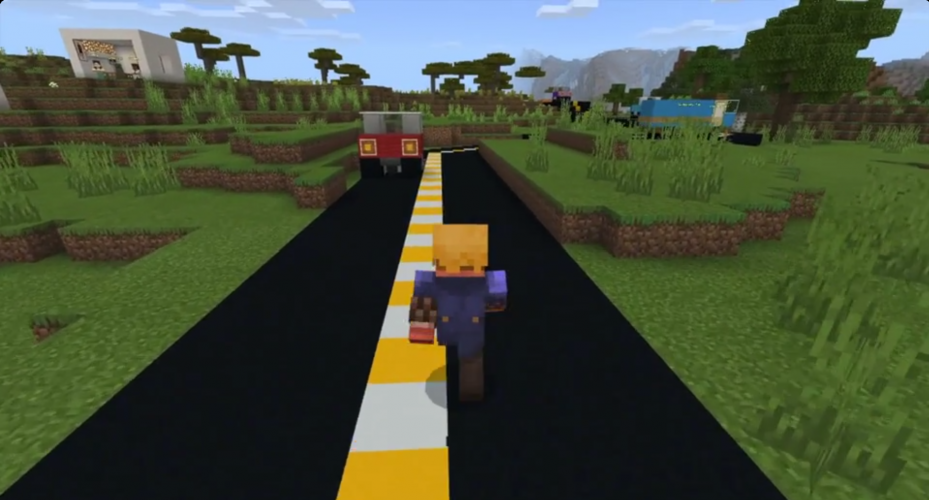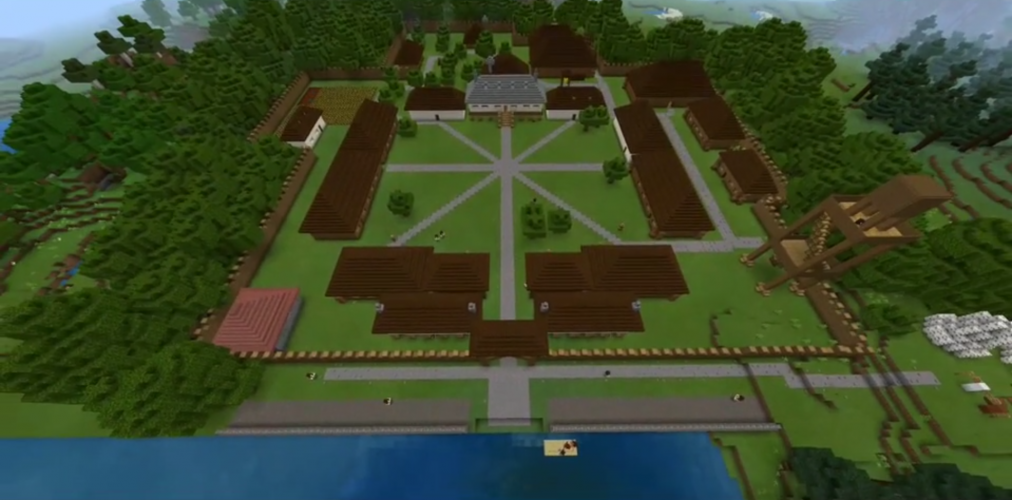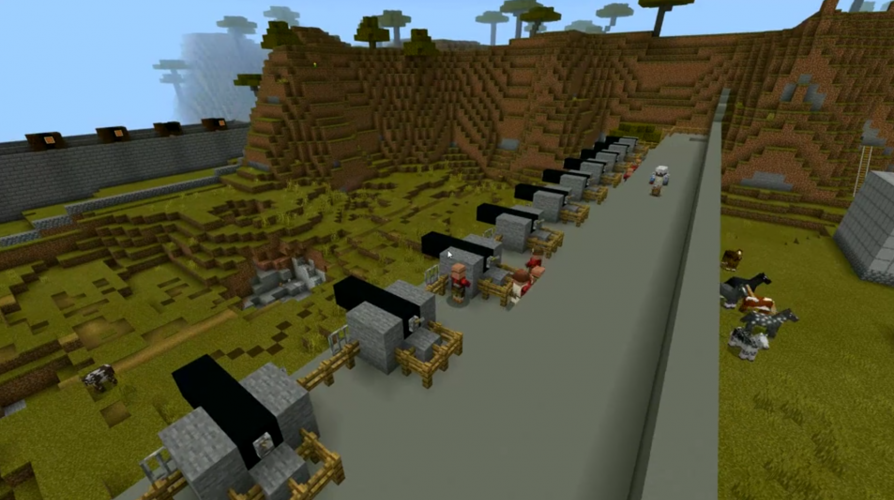In the spring of 2020, Canadian schools were in the midst of closures due to the global pandemic. Teachers were looking for ways to engage students virtually. The Canadian edtech trainers at Logics Academy came up with a plan: a countrywide storytelling challenge for students with Minecraft: Education Edition as their medium! Read this guest post about the competition from the team at Logics and experience the incredible student builds.
When schools first closed due to pandemic restrictions, Canadian teachers were looking for ways to connect with students in their newly virtual learning environments. To help fill this need, Logics Academy partnered with Microsoft Canada to engage with educators and students using Minecraft: Education Edition. Between March and June, we facilitated Minecraft educator training classes and sensed that there was an opportunity to take these learnings to the next level by creating a contest directed at students, supported by teachers. After discussing the concept with some local Minecraft ambassadors, Logics determined that a Canadian storytelling theme would allow students from across the country to tell their local stories using a specialized world with Canadian settings and scenes from the Northwest Territories to Newfoundland. The Canadian Storytelling in Minecraft contest would be a fun and remote-friendly way to close out a tough school year.
Our team created a website with instructions and FAQs, which included information about a series of virtual drop-in training sessions conducted through Microsoft Teams. During these sessions, teachers and students could learn more about Minecraft: Education Edition and the contest. Logics also partnered with Mindshare Learning Technology to provide prizes for the teams as part of the Schools of the Future Challenge. Their contribution helped to create a more competitive environment, which resulted in some fantastic applications.
With just under four weeks to announce the contest and gather submissions before the summer break, students and classrooms all across the country participated. Some students developed stories independently, and others worked together as a team. Most learners received guidance from a teacher or mentor in addition to the Logics drop-in classes to help their work progress. Students used Flipgrid to record their final videos, and those videos were submitted to a jury who would assess the content.
At the end of the summer, after hours of difficult deliberation by the jury, we selected three winners from across Canada. The prizes varied from podcasting equipment to educational robots and laptops, but more importantly, the students’ accomplishments were celebrated in their schools and greater communities. Take a look at the three winning entries and hear what the teachers had to say about their students’ amazing work.
Third place went to Harman Patel from Williams Parkway Public School in Brampton, Ontario. Harman decided to tell the story of Terry Fox, a famous Canadian athlete and advocate for cancer research. His virtual story follows Fox on the first Marathon of Hope, tracing the cross-country journey that has inspired millions of people worldwide. Watch a video of the submission here.
Harman’s teacher, Dilip Banerjee, had this to share about the experience: “The Canadian Storytelling in Minecraft contest was the perfect extension to offer my students, as it tied in extremely well with their lessons in language and social studies in a manner that they would find fun and stimulating. We were in the midst of distance learning—a difficult time for many students—and the contest was an ideal activity for them to focus on independently. Harman embraced this opportunity and took the initiative to research Terry Fox, producing a detailed, creative, and moving account of Terry’s courageous run across Canada.”

In second place, Alexander Coghill from Woodcrest Public School in Thunder Bay, Ontario, produced a recreation of the Fort William Historical Park in his home city. This fort was an important part of early Canada’s colonial history. Alexander made sure to include an acknowledgement of the First Nations in the region and efforts to reconcile settler Canadians with the country’s First Peoples. His submission is a fascinating and immersive dive into the fur trade in the early 1800s! See his highly detailed work here.
Kris Sandberg, Alexander’s teacher and a Global Minecraft Mentor, had this to say about the experience: “Alex is a tremendously gifted Minecraft player and amazing storyteller, capturing the history of Fort William Historical Park. It was my honor to be a part of this project where the teacher was definitely the student.”

And finally, a team from Millidgeville North School in St. John, New Brunswick, took the first prize! This team was made up of five students: Annika Roderick, Hejin Wang, Jonathan Corscadden, George English, and Sam Kikuchi. Their build told the story of Stephen Blucke, a Black loyalist in Nova Scotia. This project addresses tough issues of slavery, colonialism, and the difficulties that have faced the Black community as modern North America took shape.
Matthew MacTavish, the team’s teacher adviser, shared this about the experience: “I’d like to acknowledge the exceptional Minecraft building skills of Jonathan Corscadden, George English, and Sam Kikuchi, which allowed the story to take shape in a vivid and detailed setting. I’d also like to thank Hejin Wang and Annika Roderick for the leadership, vision, and hard work they displayed while planning the project and filming and editing the final product. It was an absolute pleasure to teach and support this team of exceptional students who—even after the 2020 school year had officially ended in June—still came together to collaborate on this fun learning experience. Way to make all of us teachers and your fellow students at Millidgeville North School very proud!”

The experience was rewarding for both students and teachers, and even garnered attention from national news outlets. Alex Coghill’s project on Fort William Historical Park appeared in a story about Lakehead Public Schools, his local district. His work was eventually broadcast across Northern Ontario on CBC north, part of Canada’s national broadcaster! The historical site was so impressed that they honored him and his school at an outdoor presentation, awarded him a prize pack, and gifted all the grade 7 students a free day trip—to take place after lockdown restrictions are loosened, of course. He was also named youth ambassador and spokesperson for Fort William.
His educator mentors for this project created a Minecraft Club during the pandemic as a way to encourage students to stay engaged and creative. They had embraced Minecraft as a teaching and learning tool early on, and when the contest was announced, they promoted it to their members. Alex was a keen and talented adopter, and as a result of his win and the related fanfare, the club has taken off.
Kristopher Sandberg outlines the value of their Minecraft Club in a remote and hybrid learning setting: “Minecraft continues to be an integral part of our learning in the class. Students anxiously wait for me to put Minecraft on our daily schedule. We’ve used it to help understand circuits as we did some Redstone builds and then made our own roller coasters. We’ve studied Indigenous treaties and rights through time using Minecraft as a place to showcase learning and understanding. We also took part in the #BeeCreative challenge in September. Students enjoyed making a variety of bee-friendly habitats for these important pollinators. Finally, we had quite a few students participate in the Minecraft Global Build Championship. They were very eager to try and put a winning submission into the contest. Starting next month, we’ll begin a Minecraft Club at recess time. Very rarely are we able to entice students to stay in on their lunch break, but the Minecraft Club is always popular, and students can’t wait to get their creativity on! I’ve recently been asked to help our teachers set their students up with Minecraft lessons and ideas to help engage them during remote learning. We know it’s a great way to help engage students, especially when taking part in distance learning, where connecting and collaborating with peers can be hard.”

This contest gave students the opportunity to get creative and enhance their Minecraft skills during the pandemic months when they couldn’t be in class. Their teacher mentors encouraged participation in the challenge as a way to use their own learnings from recent Minecraft: Education Edition trainings, working alongside their students to apply new concepts in the virtual space and promote collaboration. It was a win-win for everyone, and we look forward to continuing the tradition with another competition in 2021!
If you and your colleagues would be excited for an opportunity to get trained with Minecraft: Education Edition, explore providers in your region. You’ll find plenty of engaging Build Challenges to spark creativity and collaboration for your students here. You can find out how to download and start using Minecraft: Education Edition at education.minecraft.net/get-started.
The post Canadian Storytelling in Minecraft: A Creative Response to Teaching During a Pandemic appeared first on Minecraft: Education Edition.









